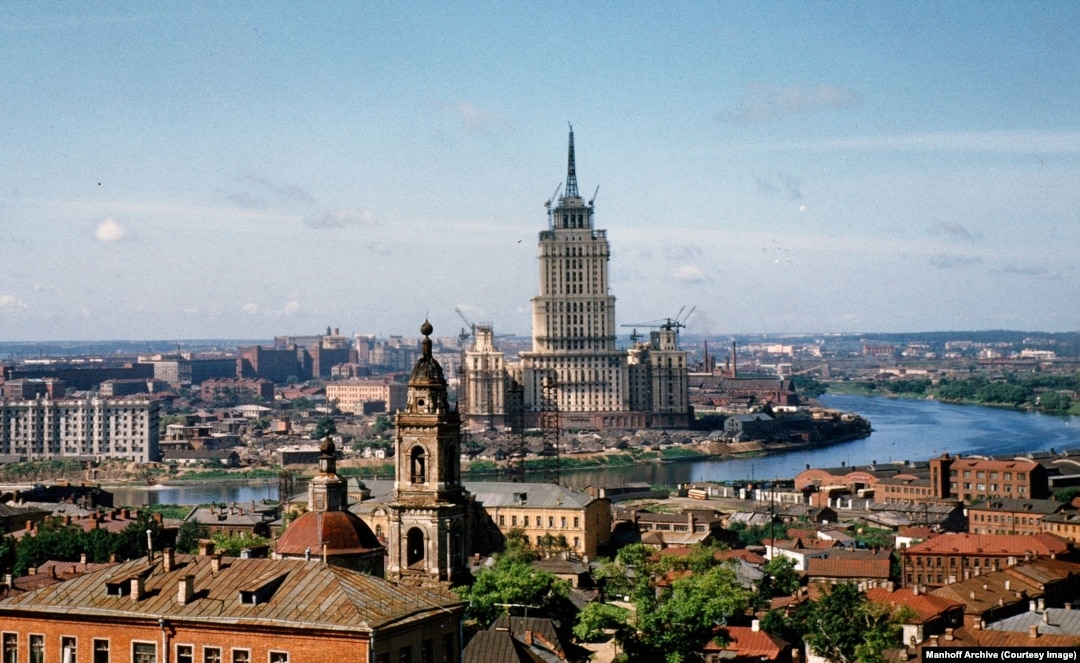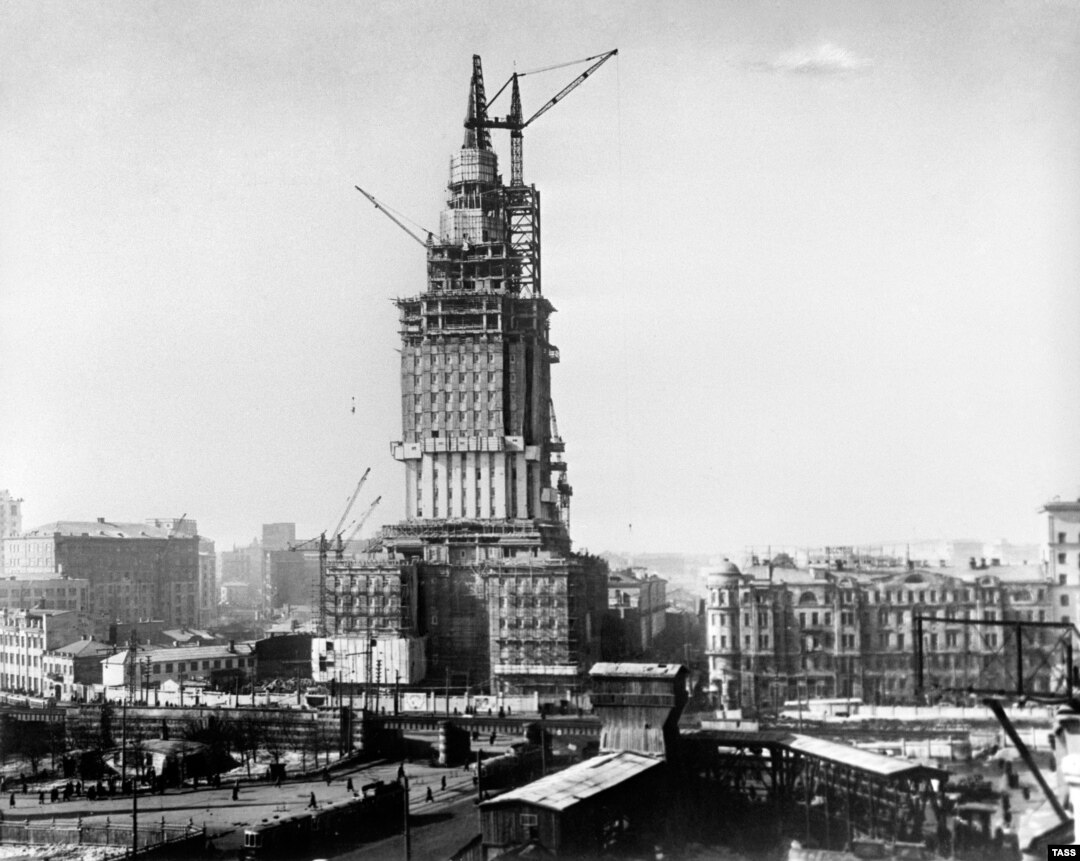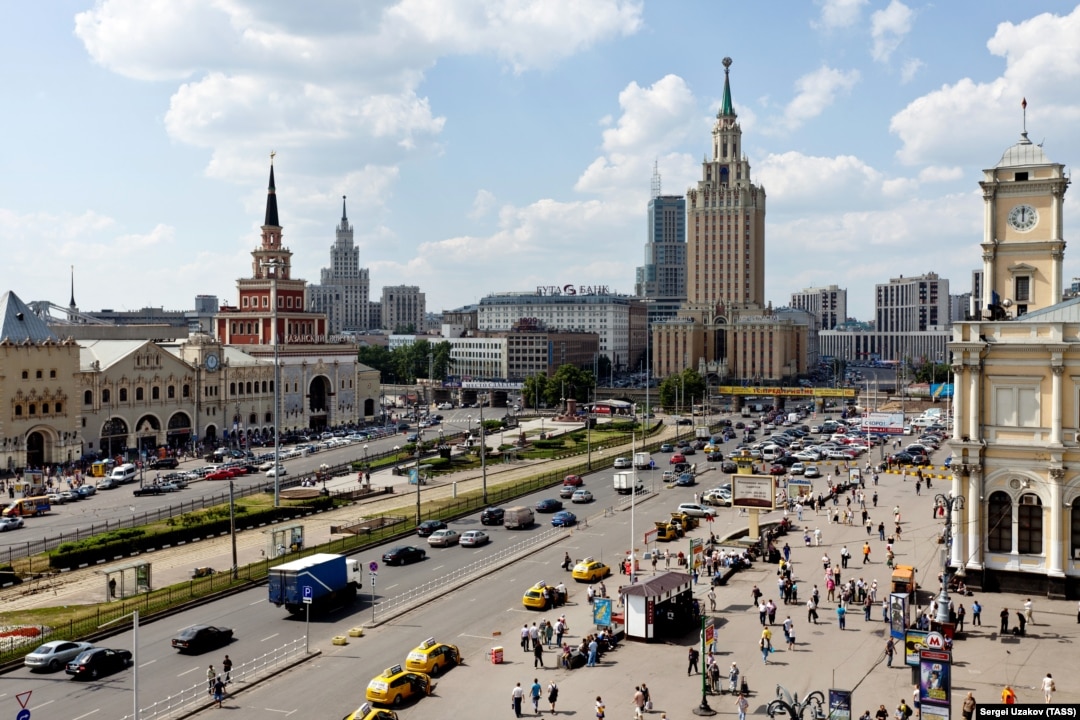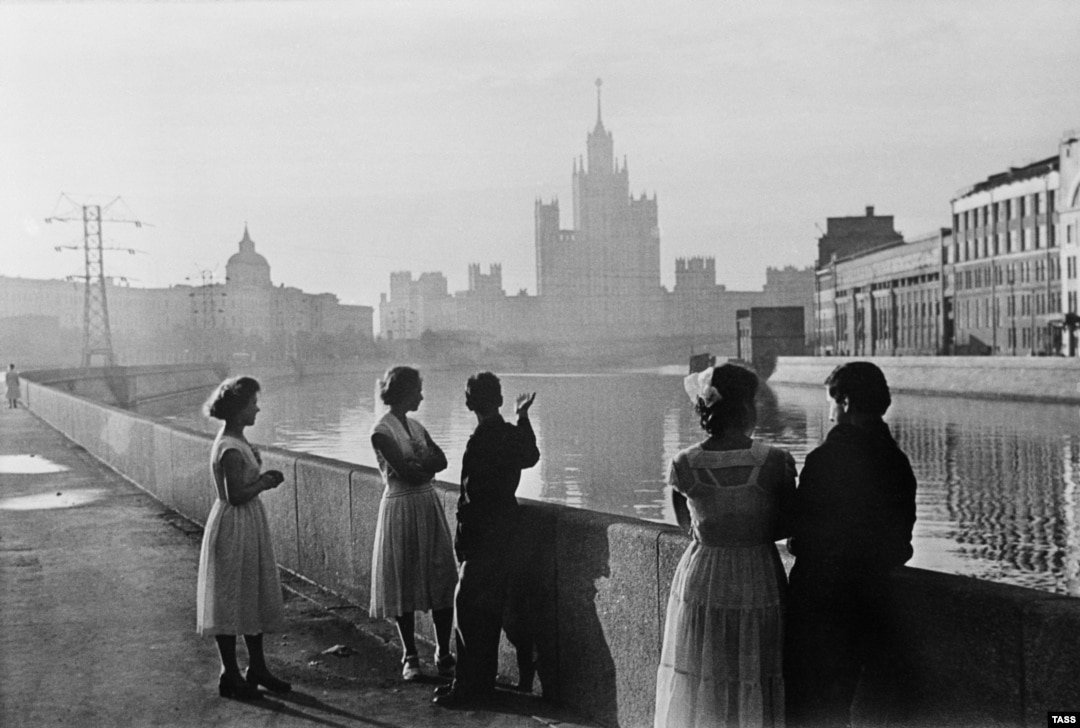The Secrets Of Stalin's Seven Sisters

Hotel Ukraina taking shape above a postwar Moscow in the early 1950s. The building was one of eight planned skyscrapers (more on that missing sister later) that were begun between 1947 and 1950.

The Leningradskaya Hotel under construction in 1953, as Josef Stalin drove his architects to show the world that the U.S.S.R. had not been "bled white" by the devastation of World War II.

Leningradskaya Hotel photographed in 2011. The midcity tower is now a part of the Hilton hotel chain. A night in the property’s presidential suite costs around $1,300.

Kotelnicheskaya Embankment Building on a hazy summer day in 1958. The building had been completed six years before, partly using the forced labor of prisoners.
The Kotelnicheskaya "city within a city" was populated by Soviet elites and secret police during its heyday, though not even the cream of Moscow’s Communists could sleep easy inside -- doors linking apartments within were reportedly designed to be busted through without warning.
Russia’s Gotham-like Foreign Ministry building, photographed in 1972. Stalin had reportedly exclaimed, "They go to America and they gasp, 'Ah, what huge buildings!' Let them now go to Moscow, see what kind of buildings we have, let them gasp."
Stalin’s penchant for Gothic architecture resulted in the spiky pillars of the Foreign Ministry and its sister buildings, as well as the stained-glass windows decorating their interiors.
Hotel Ukraina in 1983, as November ice begins to crackle on the Moskva River. The hotel's name was bestowed in 1954 by Nikita Khrushchev, who inherited the project after Stalin died.
Khrushchev reportedly wanted to mark the 300th year since Ukraine had been forcibly folded into the Russian Empire. A rather stickier gesture was his decision in the same year to "gift" the Crimean Peninsula to the Ukrainian Soviet Socialist Republic.
The tallest of the sisters, at a cloud-slicing 240 meters, is the main building of Moscow State University.
The construction of the building was documented in a Soviet-era propaganda film. According to one Russian newspaper, the money spent to build the ambitious structure could have paid for an entire town fit for 40,000 people.
The Red Gate building is perhaps the least bombastic of the seven sisters, stretching to a dainty 133 meters.
The little skyscraper, designed as an office space for communist bureaucrats, is tough to beat for access to public transport: The building’s own metro entrance is built into the foyer.
Kudrinskaya Square Building, in 1958. The blocky tower was once the home of test pilots, rocket scientists, and other stars of the Soviet world. As well as an air-conditioning system for when the weather turned warm, the residential building featured a bomb shelter in case the Cold War turned hot.
Despite the Kudrinskaya building's repeatedly making headlines for concerns about engineering weaknesses, apartments inside now regularly fetch more than $1 million.
The eighth sister was to have been the largest and most disruptive to Moscow’s skyline. Although work got under way on the foundations, Stalin’s death and Khrushchev’s angst over “architectural excesses” put the kibosh on the tower.
In the foundation spot of the eighth sister, the Hotel Russia, a monolith of Soviet dreariness, was eventually erected in 1967. It was demolished in 2007.

